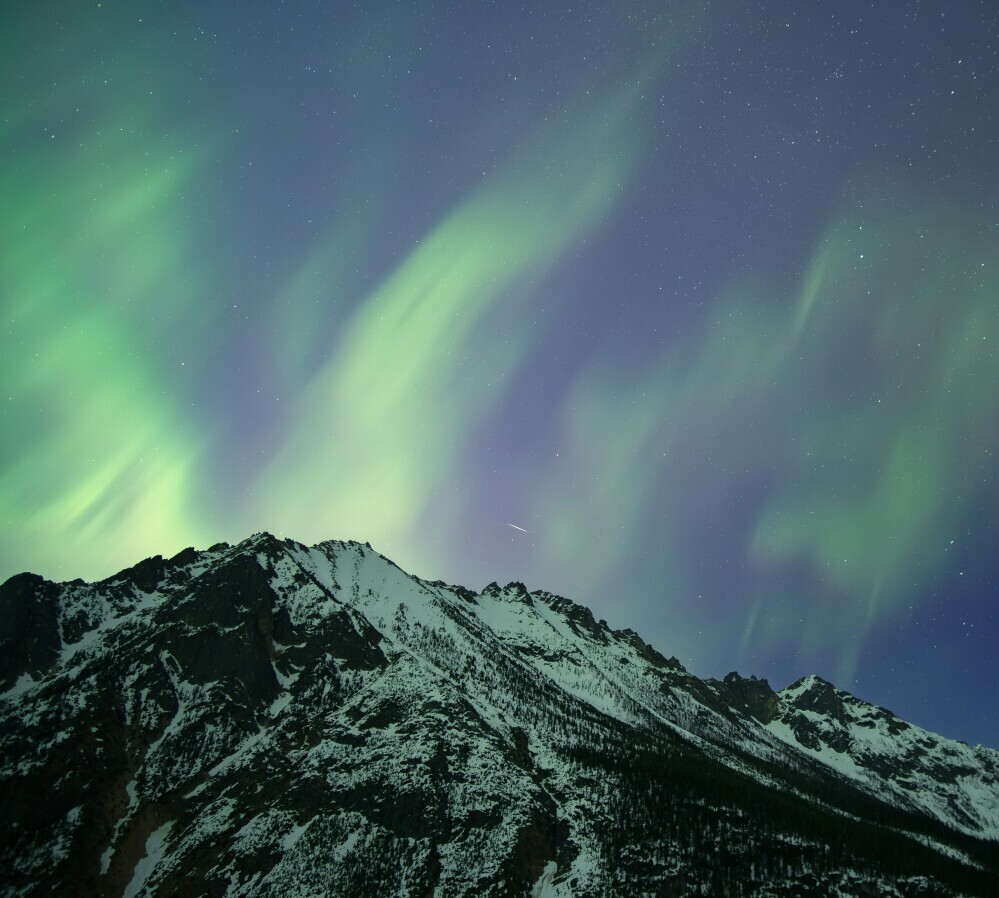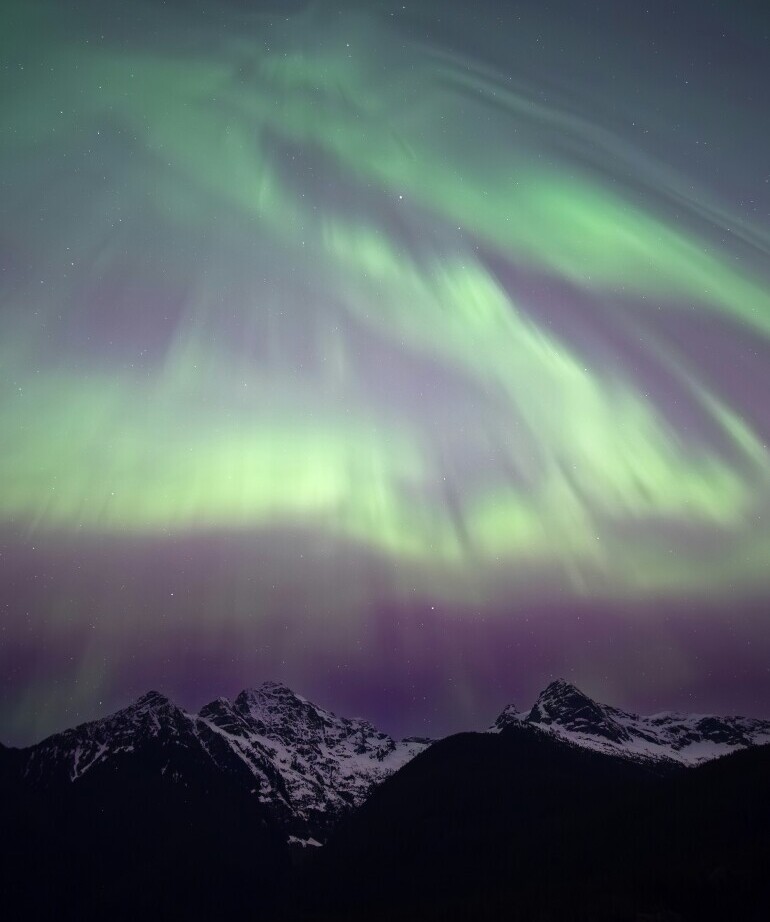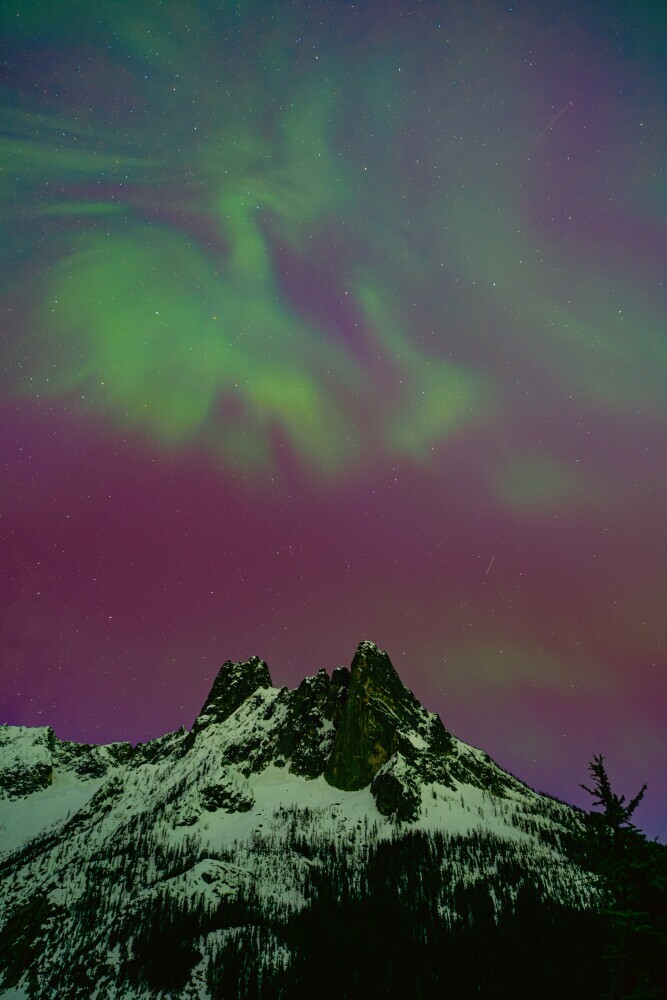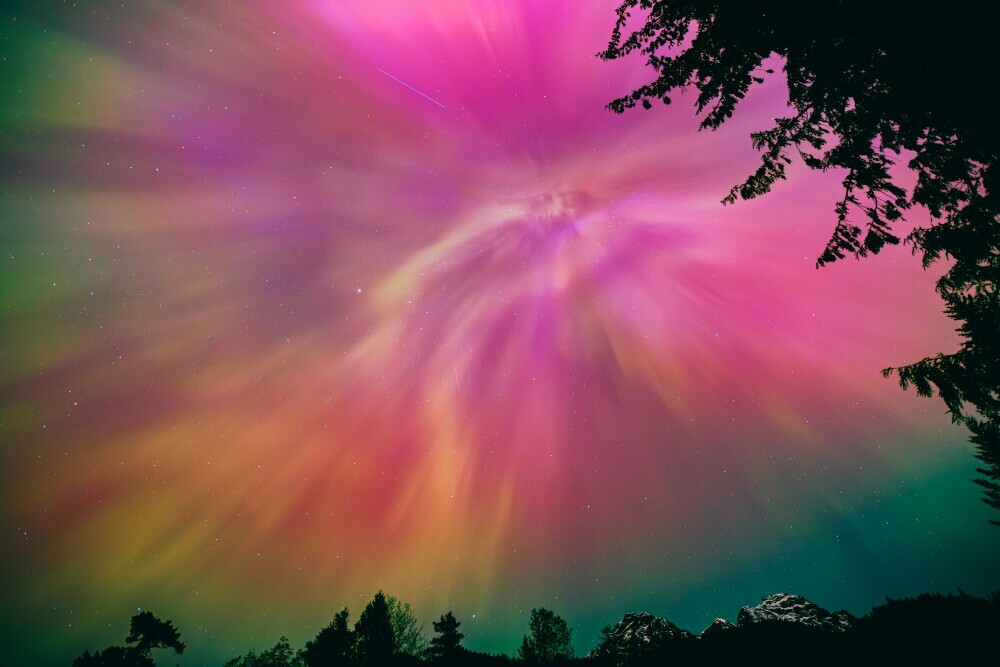 Gantavya Bhatt (2024) Mazama, WA, USA [Photograph] Unsplash
Gantavya Bhatt (2024) Mazama, WA, USA [Photograph] Unsplash
The Northern Lights, or Aurora Borealis, is a mesmerizing natural phenomenon that paints the night sky with vibrant green, pink, purple, and red hues. This celestial wonder has fascinated people for centuries, inspiring awe and curiosity. While many associate the Northern Lights with destinations like Iceland, Norway, or Finland, you may be surprised to learn that you can also witness this ethereal spectacle in various parts of the United States. Let’s explore where, when, and how you can experience the magic of the Aurora Borealis without leaving American soil.
Understanding the Northern Lights
The Aurora Borealis is caused by charged particles from the sun interacting with Earth’s magnetic field and atmosphere. These particles, primarily electrons and protons, collide with gases like oxygen and nitrogen, resulting in bursts of light that ripple and dance across the sky. This phenomenon is most visible in regions near the Earth’s magnetic poles, where the geomagnetic activity is most potent.
Although the Northern Lights are more commonly seen in countries such as Canada, Norway, and Sweden, the northernmost parts of the United States also offer opportunities to witness this stunning display—particularly during heightened solar activity, such as solar storms or peaks in the 11-year solar cycle.
Best Places to See Northern Lights in the USA
 Gantavya Bhatt (2024) North Cascades National Park, Washington, USA [Photograph] Unsplash
Gantavya Bhatt (2024) North Cascades National Park, Washington, USA [Photograph] Unsplash
1. Alaska
Fairbanks: Often called the “Northern Lights Capital of the World,” Fairbanks is one of the most reliable locations for Aurora viewing in the United States. Thanks to its proximity to the Arctic Circle, Fairbanks offers a high likelihood of seeing the Northern Lights from late August to mid-April. Several Aurora lodges and tours cater to visitors seeking the ultimate celestial experience.
Denali National Park: Known for its dramatic landscapes, Denali National Park provides a stunning backdrop for viewing the Northern Lights. The vast wilderness and minimal light pollution create ideal conditions for spotting the Aurora Borealis. Winter months are auspicious for clear, dark skies.
2. North Dakota
Rolette County: This remote area in northern North Dakota is a hidden gem for Northern Lights enthusiasts. Its sparse population and lack of urban light pollution make it an excellent spot for Aurora sightings, especially during geomagnetic storms.
International Peace Garden: Straddling the border between the United States and Canada, this tranquil park offers a unique vantage point for viewing the Northern Lights. Its serene environment adds to the magic of watching the Aurora dance in the sky.
3. Minnesota
Northern Minnesota: The northernmost regions of Minnesota, including International Falls, Voyageurs National Park, and Grand Marais, provide excellent opportunities to see the Aurora Borealis. The state’s numerous lakes and forests offer scenic settings for stargazing and Aurora viewing, particularly during late fall and winter.
4. Michigan’s Upper Peninsula
Keweenaw Peninsula: This remote area of Michigan’s Upper Peninsula is a prime location for viewing the Northern Lights. The Keweenaw Peninsula’s dark skies, particularly along Lake Superior’s shoreline, provide stunning views of the Aurora. With their crisp, clear skies, winter nights are ideal for catching a glimpse of the lights.
5. New York
Adirondack Mountains: While New York isn’t typically associated with the Northern Lights, the Adirondack Mountains occasionally provide viewing opportunities during periods of intense solar activity. The region’s dark skies and elevated landscapes make it a surprising yet delightful spot to experience the Aurora Borealis.
Tips for Northern Lights Viewing
 Kush Dwivedi (2024) Winthrop, WA, USA [Photograph] Unsplash
Kush Dwivedi (2024) Winthrop, WA, USA [Photograph] Unsplash
Seeing the Northern Lights requires a bit of planning and patience. Here are some practical tips to enhance your chances of a successful viewing experience:
Check the Aurora Forecast
Several websites and mobile apps provide real-time Aurora forecasts, indicating the likelihood of Northern Lights activity in your area. Look for a high Kp index (a measure of geomagnetic activity) to determine the best nights for viewing.
Find a Dark Sky Location
Light pollution significantly reduces your ability to see the Northern Lights. Seek out areas with minimal artificial light, such as national parks, rural locations, or designated dark sky reserves.
Visit During the Right Season
While the Aurora Borealis can occur year-round, winter typically offers the best viewing conditions due to longer nights and clearer skies. The ideal time for Aurora hunting in the United States is between September and April.
Dress Warmly
Northern Lights viewing often involves spending extended periods outdoors in cold temperatures. To stay comfortable during the wait, layer your clothing, wear insulated boots, and bring blankets.
Be Patient
The Northern Lights are unpredictable and may not appear immediately. Settle in for a few hours, enjoy the tranquility of the night, and let the anticipation build.
Capture the Moment
To photograph the Northern Lights, use a camera with manual settings, a wide-angle lens, and a tripod. Adjust the aperture, shutter speed, and ISO to accommodate low-light conditions. Experiment with different settings to capture the Aurora’s vivid colors and dynamic movements.
What to Expect When Viewing the Northern Lights in the USA
 Kush Dwivedi (2024) Washington Pass, Washington, USA [Photograph] Unsplash
Kush Dwivedi (2024) Washington Pass, Washington, USA [Photograph] Unsplash
While the Northern Lights in the United States may not be as frequent or vibrant as in polar regions, they offer a magical and unforgettable experience. The intensity and visibility of the Aurora vary depending on factors such as solar activity, weather conditions, and your location.
It’s essential to manage expectations and embrace the journey as much as the destination. Even if the Northern Lights don’t appear as vividly as hoped, the serene beauty of America’s northern landscapes and the thrill of chasing this elusive phenomenon make the adventure worthwhile.
The Science Behind the Magic
Understanding the science behind the Northern Lights can deepen your appreciation for this extraordinary natural event. The Aurora Borealis occurs in the thermosphere, a layer of Earth’s atmosphere between 50 and 600 miles above the surface. The colors of the Aurora depend on the type of gas particles involved in the collisions:
- Green: Produced by oxygen molecules at lower altitudes (up to 150 miles).
- Red: Caused by oxygen at higher altitudes (above 150 miles).
- Purple and Blue: Result from interactions with nitrogen molecules.
Earth’s magnetic field lines influence the shape and movement of the Aurora, guiding the charged particles into patterns that ripple, swirl, and shimmer across the sky.
Why You Should Chase the Aurora Borealis in the USA
 Kush Dwivedi (2024) North Cascades National Park, Washington, USA [Photograph] Unsplash
Kush Dwivedi (2024) North Cascades National Park, Washington, USA [Photograph] Unsplash
Experiencing the Northern Lights is a bucket-list adventure for many, and the United States offers several accessible and beautiful locations to witness this natural wonder. From Alaska’s rugged wilderness to the tranquil lakes of Michigan and Minnesota, each destination provides a unique perspective on the Aurora Borealis.
Chasing the Northern Lights is more than just an opportunity to see a stunning light show; it’s a chance to connect with nature, explore remote landscapes, and create lasting memories. Whether you’re a seasoned traveler or embarking on your first Aurora hunt, the Northern Lights promise a humbling and inspiring experience.
Plan Your Northern Lights Adventure Today
The Northern Lights in the USA may be elusive, but with careful planning, patience, and luck, you can witness this awe-inspiring phenomenon in your backyard. Start by selecting a destination, checking Aurora forecasts, and preparing for a night of stargazing under some of the darkest skies in the country.
Don’t forget to follow up your Northern Lights adventure by exploring the surrounding areas. Many of these locations offer additional attractions, such as hiking trails, wildlife viewing, and cultural experiences, making your trip even more memorable.
So, bundle up, grab your camera, and head out for an unforgettable journey into the night. The Northern Lights await!
Disclaimer: The Aurora Borealis is a natural phenomenon, and sightings cannot be guaranteed.
This article directly provides general research and book tours with reputable operators for the most up-to-date information and the best possible experience.
For additional blog posts, please visit:
https://northernlightsshuttertech.com/
(This post may contain affiliate links. If you make a purchase, I may receive a small commission at no cost. Thank you!)
